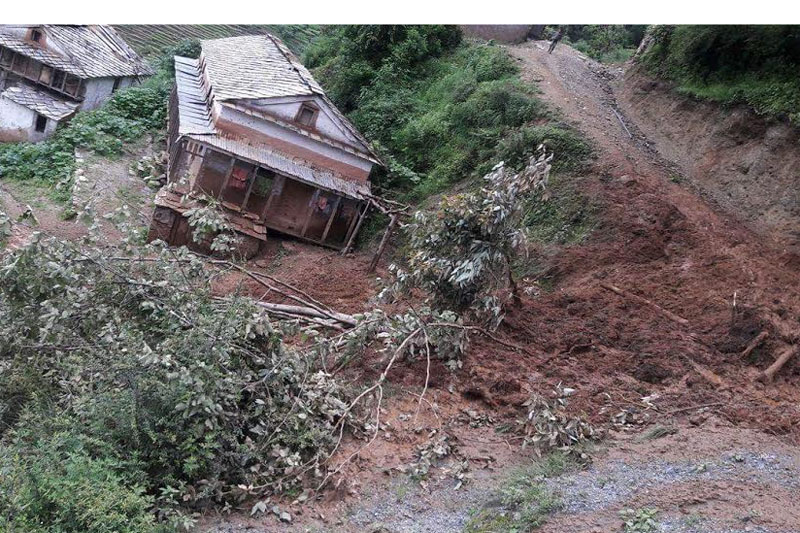Deaths related to disasters on the rise
Kathmandu, July 31
A total of 457 people died in 15 kinds of disasters between April 14 and July 28 this year.
All of the disasters are considered natural, except for drowning and boat capsize, which are considered man-made.
According to a report of National Emergency Operation Centre, which operates under the Ministry of Home Affairs, a total of 1,411 disaster events were recorded in the time-frame of three-and-a-half months.
The number of deaths recorded in the first four months of this year was significantly high in comparison with previous years. A total of 588 deaths were recorded in 2,842 incidents between April 2017 to April 2018. Similarly, 518 deaths were recorded in 1,353 disasters and 461 deaths in 1,687 disasters were recorded in 2015.
Of all events that occurred between April 14 and July 28 this year, the highest number of people, 43, died in landslides and 40 after being struck by lighting. Likewise, 28 people were swept away by floods and wind-storms claimed 13 lives. One died in snowstorm and 12 succumbed to high altitude sickness. Of those killed in the disasters, 309 were males and 146 females.
The report mentions five events of epidemic outbreak with no casualties. The report estimated the loss incurred from disasters at above Rs 1.94 billion.
The report, however, does not include road accident, which is also being considered as a disaster by the government. Officials said the number of deaths in road accidents is double the number of deaths in natural disasters, except at the time of disastrous incidents like earthquakes, wildfires and flooding.
An average of six people were killed in road accidents in the fiscal 2016-17. According to statistics published by Nepal Police, a total of 2,385 persons were killed in 10,178 road accidents last year.
Joint-secretary at the Ministry of Home Affairs Kedar Neupane said, “Nepal is a disaster-prone country, but our plan, policies and programmes are primarily concerned with response after disasters rather than being focused on ways to minimise disaster occurrence.”
According to Neupane, priority should be given to educating people and raising awareness of risks associated with disasters and mapping disaster risk zones in the country.






